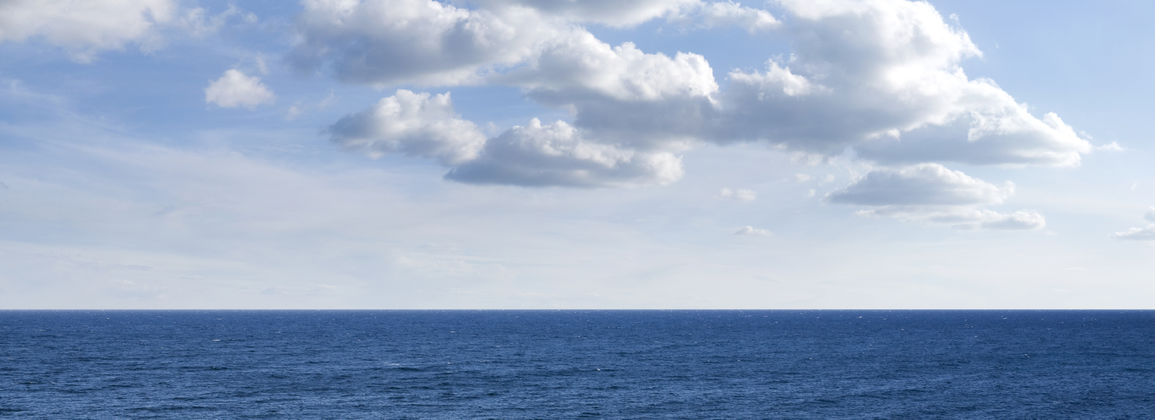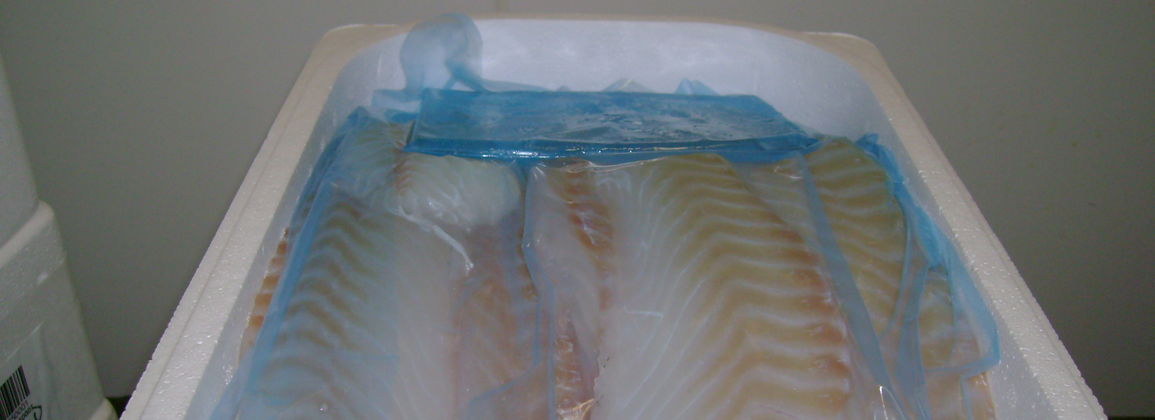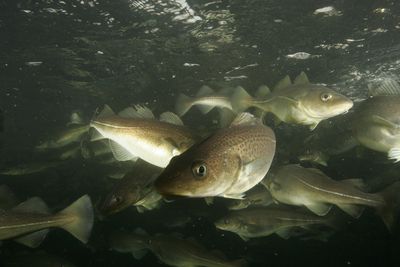Comparison of cooling techniques - Their efficiency during cooling their effect on microbial and chemical spoilage indicators
The aim of the experiments was to investigate the effects of different types of ice during cooling and storage of whole, gutted fish on heat and damage processes. Three types of ice were used: traditional crushed plate ice ("flake ice") (referred to as PI here) as well as two types of ice scrapers (liquid ice) produced in specially designed ice scrapers (referred to as LIA and LIB here) with different salt and ice ratios. The results of temperature measurements showed much faster cooling with an ice scraper than conventional flake ice. Then cooling down proved to be somewhat faster with one type of ice scraper (LIB) than the other (LIA) because the temperature of haddock cooled in LIB went from 7.5 ° C down to 0 ° C in 20 - 30 min compared to about 55 - 60 min in LIA. The corresponding time for traditional flake ice was about 260 min. The difference in cooling time in the LIA and LIB can be partly explained by the 10% heavier fish in the LIA group. Cooling whole haddock from 10 ° C and 20 ° C gave similar results as cooling it from 7.5 ° C. Cooling time from 10 ° C to 4 ° C was 24 min for the LIB group and 36 min for the LIA group. The comparable cooling time from 20 ° C to 4 ° C was 46 min for LIB compared to 55 min for LIA. The results of microbiological measurements by cultivable methods showed that little growth of specialized pests (SSÖ) on haddock skin occurred early in the storage period, regardless of the cooling method. With further storage, microbial growth was similar between the cooling groups with an ice layer at the top of the vessel. Comparable microbial growth was observed in the flesh until on day 8, a significantly higher number of Photobacterium phosphoreum and H2S-producing bacteria were found in LIB-chilled fish. It is interesting to note that the different temperature profiles measured among the refrigeration groups did not reflect the microbial growth that took place. In fact, SSÖ's damage capacity did not appear to be less in the coldest conditions during the storage period, as significantly higher levels of TVB-N and TMA were measured in fish treated with ice scraping compared to conventional ice storage. It is possible that the conditions created by these waterlogged and salted conditions when using ice scrapers are undesirable and lead to a faster damage process than occurs under icy conditions.
The aim of study was to investigate the effects of different ice media during cooling and storage of whole, gutted whitefish on temperature control and spoilage indicators. The thermodynamic, microbial and chemical properties of whole, gutted haddock were examined with respect to the cooling medium in which it was stored. Three basic types of cooling medium were used: traditional crushed plate ice (PI + PI) and two types of commercially available liquid (slurry) ice, here denoted as LIA and LIB. The ice types were furthermore divided into five groups with different salinity and ice concentration. Microbiological analysis by cultivation methods revealed that growth of some specific spoilage organisms (SSO) on fish skin was delayed at early storage, independently of the cooling methods. With further storage, little or no difference in counts was seen among traditionally iced fish and those cooled in liquid ice for 2 h before draining and top layer icing. Even less difference was observed in the flesh microbiota developing until significant growth increase in Photobacterium phosphoreum and H2S ‐ producing bacteria was seen on day 8 in LIB cooled fish. Interestingly the differences obtained in the temperature profiles of fish cooled differently were not supported by different bacterial growth behavior. In fact, SSO spoilage potential was not reduced in the coolest treatments as time progressed, as demonstrated on day 8 by the significantly higher TVB ‐ N and TMA content of fish cooled in liquid ice compared to traditional icing. Conditions created by liquid ice environment (salt uptake of flesh) may have been unfavorable, causing an even faster fish deterioration process with increasing storage time compared to traditional ice storage. Evaluation of the thermodynamic properties showed that LIB gave slightly faster cooling than LIA. For haddock stored in LIB the flesh reached 0 ° C in 20‐30 min, but it took 57 min in LIA and around 260 min in crushed plate ice (PI). The difference in the cooling rate of LIA and LIB might, apart from the physical properties of the ice, be partially explained by the fish weight, being on average 10% more in the LIA group. The additional cooling rate experiments where whole, gutted haddock was cooled down from 20 ° C and 10 ° C gave similar results. When cooled down from 20 ° C the haddock reached 4 ° C in 46 min when chilled in LIB while the same process in LIA required 55 min. Similar difference was seen when the material was cooled down from 10 ° C, where fish chilled in LIB reached 4 ° C in 24 min and fish chilled in LIA reached 4 ° C in 36 min.








